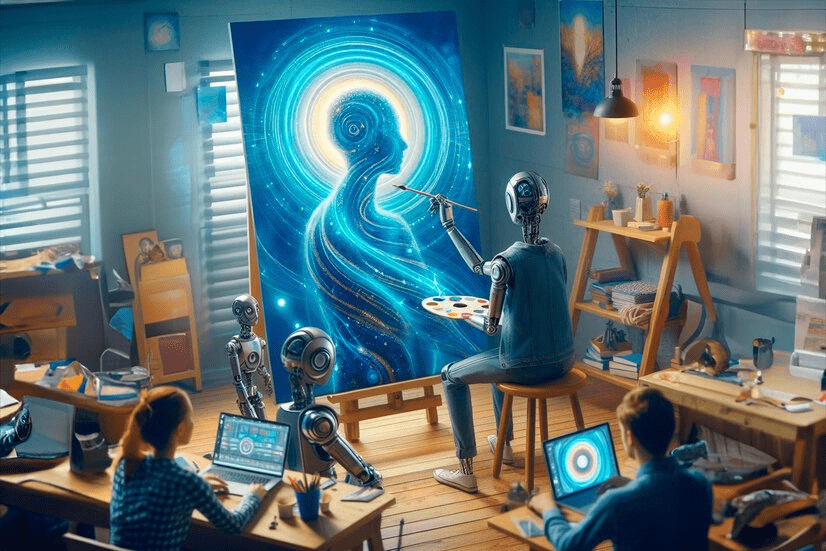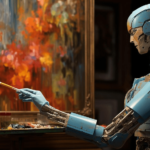The art world is experiencing a seismic shift in 2024, driven by advances in technology. Digital art, once a niche pursuit, has now become a central pillar of creativity and expression. From generative AI tools to blockchain technology, the landscape of art creation, consumption, and ownership has been fundamentally transformed. This article explores how technology is reshaping art in 2024, highlighting trends, tools, and the ways artists and audiences are adapting to this revolution.
The Intersection of Art and Technology
Art and technology have always shared a symbiotic relationship. From the invention of the camera to the rise of digital editing tools, each technological leap has influenced how art is created and consumed. In 2024, this relationship is more profound than ever. Artists are using cutting-edge technologies to push boundaries, while audiences are engaging with art in ways that were unimaginable just a decade ago. Whether it’s creating, sharing, or experiencing art, technology is rewriting the rules.
The Rise of AI in Art Creation
Generative AI: A New Creative Partner
Generative AI tools like OpenAI’s DALL·E, Adobe Firefly, and MidJourney have empowered artists to explore ideas at unprecedented speed. These tools can create hyper-realistic images, abstract compositions, and even reinterpret existing artworks, acting as collaborators rather than replacements for human creativity.
For example:
- Concept Development: Artists use AI to prototype ideas, testing colors, forms, and themes before committing to a final piece.
- Accessibility: Generative AI opens up art to people without traditional training, democratizing creativity.
AI Co-Creation and Ethical Debates
While AI enhances creativity, it also raises questions about authorship and originality. In 2024, artists are grappling with the ethics of AI-generated works. Legal frameworks are emerging to define intellectual property rights for AI-assisted art, but the debate continues to evolve.
The NFT Boom: Redefining Ownership and Monetization
Digital Ownership Through Blockchain
The advent of NFTs (non-fungible tokens) has revolutionized how digital art is bought, sold, and owned. Artists can mint their creations as NFTs, ensuring provable authenticity and granting them royalties on secondary sales. This model has given artists financial control and a new revenue stream.
Expanding Beyond Visual Art
NFTs are no longer limited to static images. In 2024, they encompass:
- Interactive Art: Pieces that change based on user interaction or external data.
- Music and Performance Art: Musicians and performers are minting live shows or compositions as collectible NFTs.
- Metaverse Installations: Artists are creating immersive spaces in virtual worlds, selling them as NFTs to collectors and brands.
Challenges and Criticisms
While NFTs empower artists, they also face challenges such as environmental concerns (though eco-friendly blockchain solutions like Ethereum 2.0 are mitigating this), oversaturation of marketplaces, and the volatility of the crypto market.
Virtual and Augmented Reality in Art
Immersive Experiences Through VR
Virtual Reality (VR) is redefining how audiences interact with art. Artists are building entire virtual galleries where viewers can “walk” through exhibitions, experiencing the artwork in 3D spaces. These VR environments provide:
- Global Access: Audiences can explore exhibits from anywhere in the world.
- New Dimensions: Artists can experiment with scale, motion, and interactivity beyond physical limitations.
AR: Bringing Art to Life
Augmented Reality (AR) overlays digital elements onto the real world, enabling artists to create interactive public art. AR apps allow users to view these works through their smartphones or AR glasses, adding layers of storytelling to physical installations.
The Evolution of Art Mediums in the Digital Age
From Pixels to Holograms
Holographic technology is pushing art into the 3D realm. In 2024, artists are creating holographic sculptures and performances that blend the physical and digital worlds.
Generative and Dynamic Art
Dynamic art responds to data, creating pieces that evolve over time. For instance:
- Weather-Responsive Art: Displays that shift based on real-time weather conditions.
- Audience-Driven Installations: Art that changes with viewer interactions or social media trends.
Social Media: The Global Art Gallery
- Platform Domination
Social platforms like Instagram, TikTok, and Pinterest have become essential for artists to showcase their work. In 2024, artists are using short-form videos, live streams, and viral challenges to engage audiences.
- Algorithm-Driven Exposure
AI-driven algorithms curate personalized art feeds, ensuring that audiences discover art tailored to their preferences. However, this also raises concerns about the homogenization of creative exposure.
Education and Collaboration in the Digital Era
Digital Tools for Learning
Platforms like Skillshare, Coursera, and Procreate’s tutorials have made art education more accessible than ever. Aspiring artists can learn advanced techniques, software skills, and even market their art without traditional schooling.
Global Collaboration
Artists from different continents are collaborating in real-time using tools like Miro, Google Jamboard, and virtual reality platforms. These collaborations often result in hybrid styles that blend diverse cultural perspectives.
Sustainability in Digital Art
Digital art reduces the need for physical materials, offering a more sustainable alternative to traditional practices. However, the energy consumption of blockchain technologies remains a concern. Artists and platforms are increasingly adopting greener solutions, such as carbon offsets and energy-efficient algorithms.
The Democratization of Art
Technology has lowered the barriers to entry in the art world. In 2024:
- Aspiring Artists: Free and low-cost tools empower new talent.
- Global Audiences: Online platforms connect creators with fans worldwide.
- Diverse Voices: Underrepresented communities can share their narratives on global stages.
The Future of Art: What’s Next?
As technology advances, art will continue to evolve in unexpected ways. By 2030, we might see:
- AI-Generated Collaborative Art Communities: Entire virtual communities co-creating art in real-time.
- Brain-Computer Interface Art: Directly translating neural activity into digital art.
- Expanded Metaverse Integration: Blurring the lines between reality and virtual experiences.
Conclusion
The digital art revolution in 2024 is a testament to the transformative power of technology. From AI-driven creation tools to immersive VR experiences, the fusion of art and technology is pushing boundaries, democratizing creativity, and redefining ownership. While challenges remain—ethical dilemmas, market volatility, and sustainability concerns—the opportunities are vast.
As we move forward, the key to harnessing this revolution lies in balancing innovation with authenticity, ensuring that technology serves as a tool for empowerment rather than a replacement for human creativity. The future of art is here, and it’s digital, dynamic, and more inclusive than ever before.


